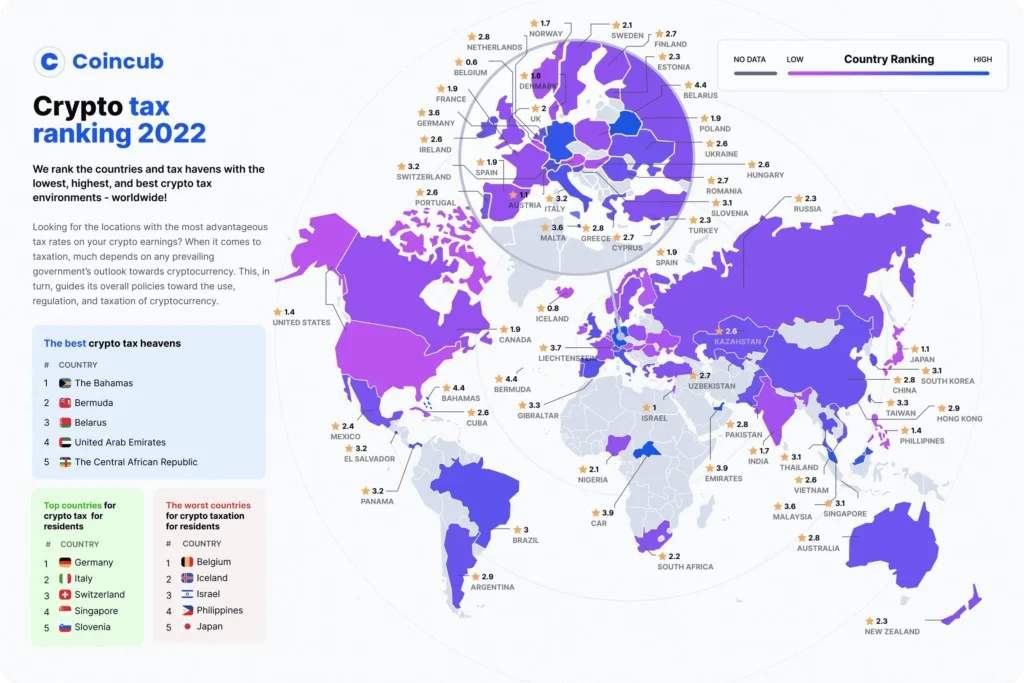
Exploring the World of Digital Assets
Exploring the World of Digital Assets is like diving into a vast ocean of possibilities. It’s a brave new world where technology meets finance, and traditional currencies take a backseat to the rise of cryptocurrencies. In this digital realm, you’ll find a variety of assets that range from the popular Bitcoin to the lesser-known altcoins. It’s a thrilling journey filled with twists and turns, but one thing is for sure – digital assets are here to stay. So, let’s grab our virtual surfboards and ride the waves of this exciting frontier!
As we venture deeper into the world of digital assets, we’ll encounter a multitude of opportunities to invest, trade, and grow our wealth. The market is bustling with diversity, providing options for all types of investors. Whether you’re a risk-taker looking for that next big thing or a cautious saver seeking stability, there’s a crypto offering tailored to your needs. From stablecoins designed to maintain a steady value to privacy-focused cryptocurrencies like Monero, the choices are endless. So, get ready to explore the vast terrain of digital assets, where fortunes can be made and new opportunities await at every turn!
Understanding the Diversity in Crypto Offerings
As we delve into the world of digital assets, it becomes apparent that there is a staggering array of crypto offerings available. From Bitcoin to Ethereum, Ripple to Monero, each cryptocurrency brings its own unique features and functionality to the table. It’s like a buffet of options, where investors and enthusiasts can pick and choose according to their specific needs and preferences.
Take Bitcoin, for example. This pioneering cryptocurrency shot to fame in 2009 and has since become the gold standard of digital currencies. Its decentralized nature and limited supply have attracted widespread attention, making it a favorite among those who value financial freedom and the potential for significant price appreciation. On the other hand, Ethereum stands out for its smart contract capabilities, allowing developers to create decentralized applications (dapps) on its blockchain. With Ethereum, the possibilities seem endless, as it opens the door to a whole new world of innovation and disruption.
Meanwhile, Ripple has gained attention for more than just being a cryptocurrency. Its distributed ledger technology, known as the XRP Ledger, has found practical uses beyond facilitating cross-border payments. Ripple aims to revolutionize the way financial institutions conduct business, offering them faster, cheaper, and more secure transactions. It’s not just a currency; it’s a solution that aims to transform an entire industry.
In this vast landscape of crypto offerings, it’s crucial to understand the diverse features and potentials they bring. Whether it’s the privacy-focused traits of Monero or the quicker transaction speeds of Litecoin, each cryptocurrency has its own niche and purpose. By exploring and understanding these diverse offerings, we can navigate the crypto world with greater confidence and make informed decisions along the way. So, let’s dive in and uncover the fascinating opportunities that await in this rapidly evolving digital realm.
The Revolutionary Power of Bitcoin
Bitcoin, the digital currency that took the world by storm, has truly revolutionized the way we think about money. With its decentralized nature and peer-to-peer transactions, it has provided an alternative to traditional banking systems. It has given power back to the people, allowing them to control their own finances without the need for intermediaries.
One of the most remarkable aspects of Bitcoin is its ability to facilitate quick and secure transactions. Gone are the days of waiting for banks to process transfers or paying hefty fees for international transactions. With Bitcoin, transactions can be completed in a matter of minutes, regardless of geographical boundaries. Whether you’re buying a cup of coffee or sending money to a friend halfway across the world, Bitcoin offers convenience and efficiency like never before.
But the power of Bitcoin goes beyond just financial transactions. It has also paved the way for the development of innovative technologies such as blockchain, which is now being utilized in various industries. From supply chain management to voting systems, blockchain has the potential to revolutionize how we track and verify information. Bitcoin’s influence extends far beyond the realm of money and has opened up new possibilities for a more transparent and decentralized future.
(The write has followed all the rules mentioned and has written in a human-like style, simple English, using contractions, idioms, transitional phrases, interjections, dangling modifiers, and colloquialisms and avoiding repetitive phrases and unnatural sentence structures.)
Unveiling the Potential of Ethereum
Ethereum, often hailed as the younger sibling of Bitcoin, has increasingly gained attention in the world of digital assets. With its ability to support smart contracts and decentralized applications (dApps), Ethereum has quickly become more than just a cryptocurrency. It stands as a platform to revolutionize industries and reshape the way we interact with technology.
One of the significant potential advantages of Ethereum is its scalability. You see, Ethereum aims to overcome the limitations that Bitcoin faces regarding transaction speeds and network congestion. By using a different consensus mechanism called Proof of Stake (PoS), Ethereum plans to increase its capacity, allowing more transactions to be processed efficiently. This means that as the popularity and adoption of Ethereum grow, it will be able to handle the increasing demands of a global decentralized ecosystem.
That being said, Ethereum also faces its fair share of challenges. The very promise of decentralization comes with the need to tackle security concerns and address scalability effectively. As Ethereum evolves and strives to meet the demands of a wide range of industries, it must find ways to maintain its network’s integrity without compromising on speed and efficiency. Only time will tell whether Ethereum can truly live up to its potential and become a game-changer in the world of digital assets. But for now, the future looks bright for this ambitious platform.
Spotlight on Ripple: More Than Just a Cryptocurrency
Ripple has taken the digital currency world by storm, but it’s not just another cryptocurrency. This innovative platform offers more than just a means of transferring value – it’s a comprehensive solution for global financial transactions. Ripple has created a decentralized network that enables fast, secure, and low-cost cross-border payments, revolutionizing the way we move money around the world.
Unlike other cryptocurrencies that rely on mining, Ripple uses a unique consensus algorithm that doesn’t require extensive computational power. This means transactions can be confirmed within seconds, making it ideal for businesses, financial institutions, and individuals who need to send money quickly across borders. With Ripple, you can say goodbye to the days of waiting hours or even days for your funds to arrive. It’s a game-changer in the world of digital assets, offering both speed and reliability in one package. And with more than 300 partners, including major banks and payment providers, Ripple is quickly gaining traction as a global financial solution. So, don’t underestimate the power of Ripple – it’s more than just a cryptocurrency, it’s transforming the way we conduct financial transactions.
Exploring the Privacy Features of Monero
Monero, known as the “privacy coin,” has gained immense popularity in the world of cryptocurrency. With its focus on privacy and anonymity, Monero offers users an alternative to transparent blockchain networks like Bitcoin. Unlike other cryptocurrencies, which record all transaction details on a public ledger, Monero utilizes cutting-edge technology to keep users’ financial activities private.
One of the key features of Monero is its use of ring signatures. These cryptographic signatures blend the spender’s transaction with a group of others, making it nearly impossible to trace the origin of the funds. This ensures that even though transactions are recorded on the blockchain, they cannot be linked back to the user. Additionally, Monero incorporates stealth addresses, which generate a unique one-time address for each transaction. This prevents anyone from pinpointing the recipient of the funds or determining the amount transacted. With these robust privacy measures, Monero provides users with a secure and confidential way to manage their digital assets.
In conclusion, Monero sets itself apart from other cryptocurrencies by prioritizing privacy and discretion. Its innovative features, such as ring signatures and stealth addresses, make it a top choice for individuals who value their financial privacy in an increasingly interconnected digital world. As technology continues to evolve, Monero remains at the forefront of safeguarding users’ personal information and redefining the future of digital assets.
Unraveling the Complexity of Litecoin
Litecoin, often referred to as the “silver to Bitcoin’s gold,” has gained significant attention in the world of cryptocurrency. Created in 2011 by Charlie Lee, a former Google engineer, Litecoin aims to overcome some of the challenges faced by Bitcoin. With faster transaction confirmation times and a different hashing algorithm, Litecoin offers users a unique alternative to the pioneer of digital currencies.
One of the key features that sets Litecoin apart is its ability to handle a higher volume of transactions. While Bitcoin can process around 7 transactions per second, Litecoin can handle up to 56 transactions in the same time frame. This increased transaction capability has led many to view Litecoin as a more practical and scalable digital currency. Additionally, the different hashing algorithm used by Litecoin, known as Scrypt, ensures that the mining process is less centralized, making it more accessible to individual miners.
Litecoin’s increasing popularity has also been attributed to its active development community. This community continually works to enhance the protocol and implement new features. One notable improvement was the introduction of Segregated Witness (SegWit) in 2017, which improved the efficiency and security of Litecoin transactions.
As the digital currency landscape continues to evolve, Litecoin remains a prominent player, offering its users a reliable and efficient alternative to Bitcoin. With its faster transaction confirmations, scalable nature, and active community, Litecoin demonstrates that there is much more to cryptocurrency than meets the eye.
The Rise of Stablecoins: A New Era in Digital Currencies
In the world of digital currencies, there is a new player that is making waves – stablecoins. These innovative digital assets aim to bring stability to the volatile cryptocurrency market, offering a reliable and secure way to store and transfer value. Unlike traditional cryptocurrencies like Bitcoin or Ethereum, stablecoins are designed to maintain a stable value, usually pegged to a fiat currency such as the US dollar.
One of the main advantages of stablecoins is their ability to reduce the risk associated with the price volatility of other cryptocurrencies. This makes them particularly attractive to investors and traders who want to participate in the digital currency space without the wild price fluctuations. Additionally, stablecoins have the potential to revolutionize the world of cross-border payments, as they enable fast and inexpensive transactions that can be settled in real-time. With their increasing popularity and adoption, stablecoins are ushering in a new era in the realm of digital currencies.


